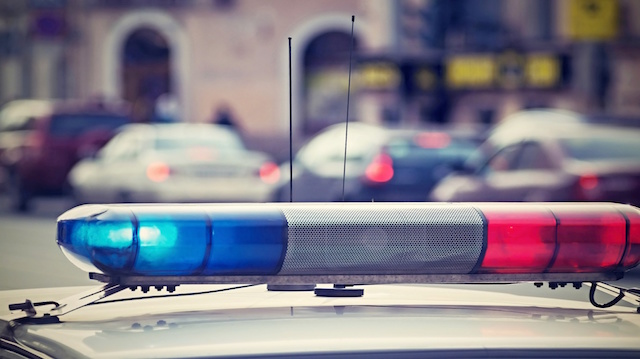
Walter Scott, Tamir Rice, Eric Garner, and Laquan McDonald all became household names after videos of their deaths were recorded and released to a shocked public. The visibility of these deaths and the excessive force involved has given rise to protests across the country and renewed calls for the transparency and accountability of the nation’s police.
In response to incidents of police abuse and claims of systemic racism, many have called for the widespread adoption of body cameras on police officers. In December 2014, President Obama called for $75 million over three years to purchase body-mounted cameras for local police forces. All three Democratic candidates for president have expressed their support for this policy.
Even those who believe that cases of excessive force and police abuse are aberrations have embraced the introduction of body cameras as a means to prove that the vast majority of officers operate lawfully and to collect evidence to defend against spurious claims. Ronald T. Hosko, president of the Law Enforcement Legal Defense Fund, writes that officers are “eager to improve our justice system by holding to account those few cops who err in performing their duties.”
However, despite this widespread agreement about the advantages of body cameras, many activists and civil liberties groups have expressed concern about policies surrounding cameras, namely, when the cameras will be used and who will be provided access to the footage. Some fear that since the cameras are turned toward the public and not officers, they may be co-opted as a tool of government surveillance.
According to a study by the Leadership Conference on Civil and Human Rights, many departments lack clear policies that would forbid tampering and misuse of footage, and fail to provide guidance on when officers are required to record or even address how the public could gain access to footage. This last point is particularly troubling in light of the City of Chicago’s behavior in the Laquan McDonald case, which required a police whistle-blower, a leaked autopsy report, a $5 million legal settlement with the victim’s family, and multiple lawsuits by the ACLU and others before the video was finally made public under the Freedom of Information Act — more than a year after the shooting.
Additionally, there are conflicting opinions on whether or not body cameras will solve the problems they are intended to solve. Activists point out that even though the deaths of Eric Garner, Tamir Rice and others were caught on camera, the officers responsible were never indicted and that even among those officers who have been indicted with the help of video evidence, none have yet been convicted.
In a study for the Department of Justice, Arizona State University criminologist Michael White noted a severe lack of research about the impact of body cameras and added that “most of the claims about the technology are untested.” One of the few studies that has been released came from researchers at the University of Cambridge, who examined the use of body cameras in Rialto, California.
 During their year-long experiment, they found that police officers without cameras were twice as likely to use force as officers not wearing cameras. However, the researchers cautioned that it could not yet be known whether the reduction in force was caused by officers changing their behavior or whether knowing that they were being filmed prompted suspects to act differently, leading to less confrontation.
During their year-long experiment, they found that police officers without cameras were twice as likely to use force as officers not wearing cameras. However, the researchers cautioned that it could not yet be known whether the reduction in force was caused by officers changing their behavior or whether knowing that they were being filmed prompted suspects to act differently, leading to less confrontation.
Regardless of how effective body cameras might be, the rash of police violence against unarmed civilians stands in stark relief against historically low rates of violent crime. Nationally, crime has been steadily dropping since the early 1990s. This contrast calls into question whether the headline-grabbing nature of recent police violence is an emerging trend or if the proliferation of civilian cameras in cellular phones is simply shining a light on a long-festering systemic issue.
If this police behavior does reflect systemic problems, as many believe, it would require more involved reforms to the way police officers are trained to conduct themselves when interacting with the public.
In May, President Obama’s Task Force on 21st Century Policing, convened in the aftermath of events in Ferguson, Missouri, recommended improvements to police training on mental health issues, bias awareness, crisis intervention techniques and deescalation tactics.
Likewise, several leaders of the Black Lives Matter movement have called for more extensive reform through their Campaign Zero initiative, which features ten policy proposals intended to limit police interventions, improve community interactions and ensure police accountability.
No one policy, whether body cameras or increased training, is likely to alleviate tensions between police and the people they protect and serve. Especially in minority communities, memories of flawed strategies such as broken-windows policing linger, while new stories of police abuse fill the nightly news.
Without a comprehensive system of reforms that addresses past mistakes and ensures future accountability, local police forces cannot work with citizens to create a safer and more trusting atmosphere.
What do you think is the best way forward on police accountability and criminal enforcement?
-The Alternative Daily
Sources:
http://www.cnn.com/2016/01/14/us/chicago-police-shooting-cedrick-chatman-video/index.html
http://www.wired.com/2015/08/police-training-seriously-lacking-actual-science
http://www.joincampaignzero.org

